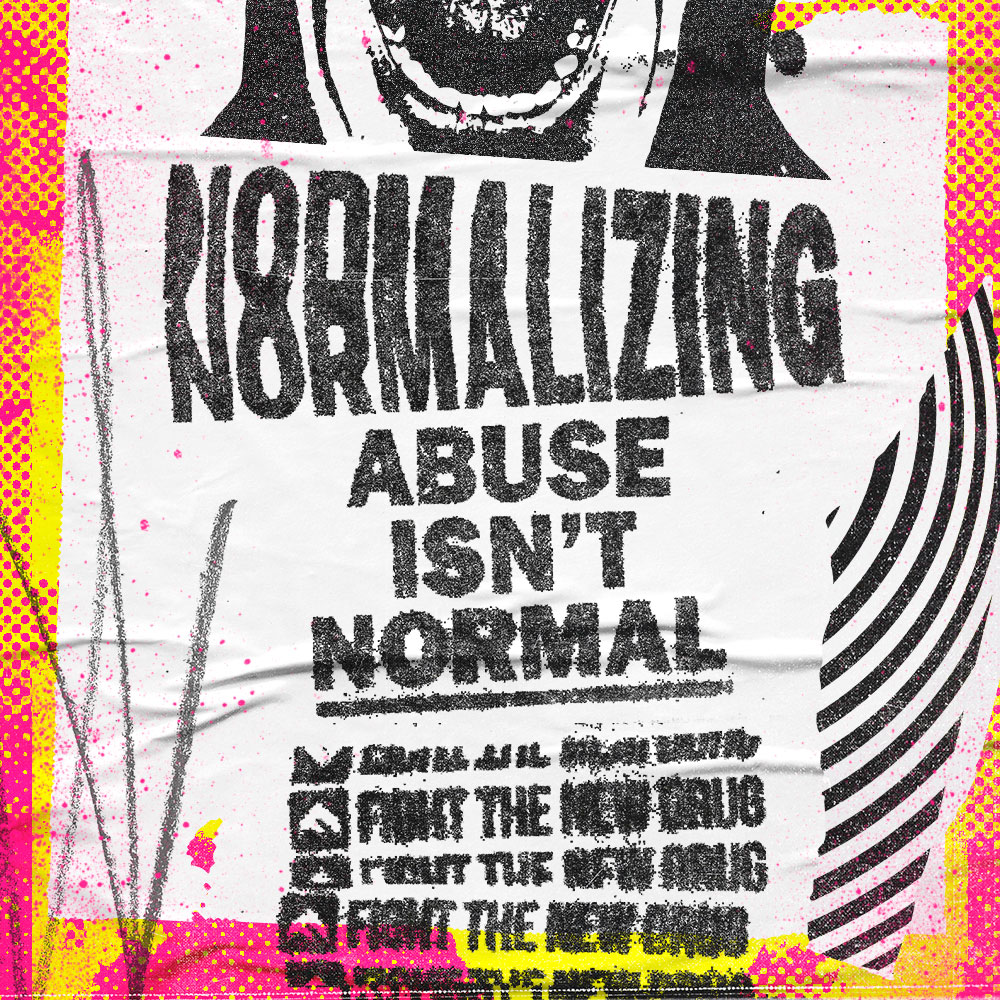This post was originally published on The Gold Coast Bulletin’s website in 2016. It has been updated and edited for content and clarity. 5 minute read.
For anyone affected by abuse and needing support, call 1-800-799-7233, or if you’re unable to speak safely, you can log onto thehotline.org or text LOVIS to 1-866-331-9474.
In writing this article, it is not our intention to prove, scientifically or otherwise, that behind every violent sex crime there is a pornography problem.
Clearly, violent sexual crimes existed long before pornographic magazines and porn sites came into the picture. The purpose of this article is to address the concerning misinformation that exists which states that pornography is totally harmless, or by that the necessary “conclusive scientific data” that pornography helps to fuel sex crimes simply “doesn’t exist.” (We have heard countless people even argue that pornography is helpful because it allows people to consume their violent, degrading sexual fantasies, rather than practicing them on another person.)
These pro-porn arguments contend that pornography actually decreases instances of rape and sexual assault because it is an acceptable sexual outlet. However, there is already enough evidence of a causal link between porn and sex crimes to make the claim that pornography is extremely harmful.
A concerning new trend in Australia
A concerning trend tracked by welfare workers at the Gold Coast Centre Against Sexual Violence is shining a light on the increased number of women who have been raped and subjected to violence.
According to community forums, the Gold Coast’s domestic violence crisis is being driven by abusers who are consumed by their interest in pornography that depicts these harmful behaviors.
In 2016, Centre Director Di McLeod addressed more than 50 community stakeholders and detailed the shocking violence which included women being coerced into group sex and being strangled and choked. Much of the violence had occurred after women were raped, and their injuries required them to obtain treatment in the emergency room at local hospitals.
Related: Multiple Studies Confirm Connection Between Consuming Porn & Sexual Aggression
“These levels of physical and sexual violence are bordering on and including behavior that would meet the criminal code definition of torture,” Ms. McLeod told the Problem with Porn conference at Southport. “What used to be an uncommon story is now very much an everyday story involving women of varied ages and diverse backgrounds.”
In the past five years, the Coast center had experienced a 56% increase in referrals from emergency departments of local public hospitals, the forum was told.
“Sometimes the sexual violence is committed by a just-met partner, but in cases where the woman has knowledge of the offender’s habits she has often identified that the offender is a regular consumer of pornography,” Ms. McLeod said.
Not every consumer
The forum was told it was clear not everyone who consumed pornography would commit sexual and domestic violence “because some men who use pornography don’t rape.” In fact, most people who consume porn do not act out in violence. However, the experiences of these women focus heavily on their abusers’ porn habits.
“But what research is finding and what we are seeing at our center is that pornography is clearly influencing sexual expectations and practices between intimate partners, so that the correlation between pornography, rape, and domestic violence can no longer be ignored,” McLeod said.
Related: Research Finds Softcore Porn Leads To Greater Acceptance of Rape Culture
The key finding by welfare workers was those consuming porn could not see the difference between fantasy and reality and believed “women are up for [sex] 24-7.” The increased reporting figures were due to the extent of the injuries, as well as many women now feeling more empowered to report what happened to them.
Anti-porn activist and author Melinda Tankard Reist highlighted an email she had received from McLeod warning about the concerning trends on Australia’s Gold Coast.
“If we don’t address this, you will be more overloaded with clients than you already are,” Tankard Reist said.
Conditioned From a Young Age
Her research showed the average age of exposure to pornography was 11 but that introduction was far beyond boys just “viewing bare breasts” and often involved youth watching rape porn.
“I believe it is an act of child abuse to expose our children to this. Everywhere I go schools are reeling, they are playing catch-up (to deal with this issue),” Tankard Reist said.
Related: Sex Before Kissing: How 15-Year-Old Girls Are Dealing With Porn-Addicted Boys
Interviews with young schoolgirls revealed their bodies were being judged by some male students and rated as porn stars. Some girls who were hoping for a warm relationship were told her by their boyfriends “give me a blow job and I’ll give you a kiss.”
After watching the film Fifty Shades of Grey, many teenage girls believed that being stalked by a man was romantic, Tankard Reist said.
“They feel the equivalent of being a sexual service station for the boys and guys,” she said.
Click here to read the full report on The Gold Coast Bulletin’s website.
________________________
Why this matters
Why is it that society openly speaks out against rape and abuse, yet doesn’t condemn porn that fetishizes and promotes this behavior and worse?
The stories above are from real people who are getting hurt, and porn’s influence is a part of that. We cannot be okay with this. Stories like these provide all the more reason why consuming porn is unhealthy and toxic to understanding the trauma that survivors of violence and abuse endure.
Related: Elizabeth Smart Speaks For The First Time About Pornography’s Role In Her Abduction
Of course, consuming violent porn does not automatically make someone violent or abusive. Even so, the research has consistently shown in recent years how porn is inherently connected with sexual violence. It’s worth considering just how much they’re connected.
A 2015 meta-analysis published in the Journal of Communication shows concrete evidence that consuming pornography increases the likelihood of physical and verbal sexual aggression.
The researchers sought out to answer one question: Is pornography consumption correlated with committing actual acts of sexual aggression? They performed a meta-analysis (collecting data from numerous studies done by different researchers to show one particular finding) of 22 studies from 7 different countries. Their findings?
“[Porn] consumption was indeed associated with sexual aggression in the United States and internationally, among males and females, and in cross-sectional and longitudinal studies. Associations were stronger for verbal than physical sexual aggression, although both were significant. The general pattern of results suggested that violent content may be an exacerbating factor.”
The unfortunate thing is that this is not a completely shocking discovery. For those who have studied the link between pornography and sexual violence, these findings only make the case more concrete. Science and research have shown how even non-violent porn consumers can be influenced by what they consume.
The facts are clear: porn is harmful and research is proving it.
No matter what people say to try and make porn seem normal or harmless, there’s enough evidence out there that says it’s not, no matter which continent you’re on. With porn being so available, affordable, and accessible, we have to be informed on its real harms on real people. And it starts here, with us.
For anyone affected by abuse and needing support, call 1-800-799-7233, or if you’re unable to speak safely, you can log onto thehotline.org or text LOVIS to 1-866-331-9474.
Your Support Matters Now More Than Ever
Most kids today are exposed to porn by the age of 12. By the time they’re teenagers, 75% of boys and 70% of girls have already viewed itRobb, M.B., & Mann, S. (2023). Teens and pornography. San Francisco, CA: Common Sense.Copy —often before they’ve had a single healthy conversation about it.
Even more concerning: over half of boys and nearly 40% of girls believe porn is a realistic depiction of sexMartellozzo, E., Monaghan, A., Adler, J. R., Davidson, J., Leyva, R., & Horvath, M. A. H. (2016). “I wasn’t sure it was normal to watch it”: A quantitative and qualitative examination of the impact of online pornography on the values, attitudes, beliefs and behaviours of children and young people. Middlesex University, NSPCC, & Office of the Children’s Commissioner.Copy . And among teens who have seen porn, more than 79% of teens use it to learn how to have sexRobb, M.B., & Mann, S. (2023). Teens and pornography. San Francisco, CA: Common Sense.Copy . That means millions of young people are getting sex ed from violent, degrading content, which becomes their baseline understanding of intimacy. Out of the most popular porn, 33%-88% of videos contain physical aggression and nonconsensual violence-related themesFritz, N., Malic, V., Paul, B., & Zhou, Y. (2020). A descriptive analysis of the types, targets, and relative frequency of aggression in mainstream pornography. Archives of Sexual Behavior, 49(8), 3041-3053. doi:10.1007/s10508-020-01773-0Copy Bridges et al., 2010, “Aggression and Sexual Behavior in Best-Selling Pornography Videos: A Content Analysis,” Violence Against Women.Copy .
From increasing rates of loneliness, depression, and self-doubt, to distorted views of sex, reduced relationship satisfaction, and riskier sexual behavior among teens, porn is impacting individuals, relationships, and society worldwideFight the New Drug. (2024, May). Get the Facts (Series of web articles). Fight the New Drug.Copy .
This is why Fight the New Drug exists—but we can’t do it without you.
Your donation directly fuels the creation of new educational resources, including our awareness-raising videos, podcasts, research-driven articles, engaging school presentations, and digital tools that reach youth where they are: online and in school. It equips individuals, parents, educators, and youth with trustworthy resources to start the conversation.
Will you join us? We’re grateful for whatever you can give—but a recurring donation makes the biggest difference. Every dollar directly supports our vital work, and every individual we reach decreases sexual exploitation. Let’s fight for real love:





